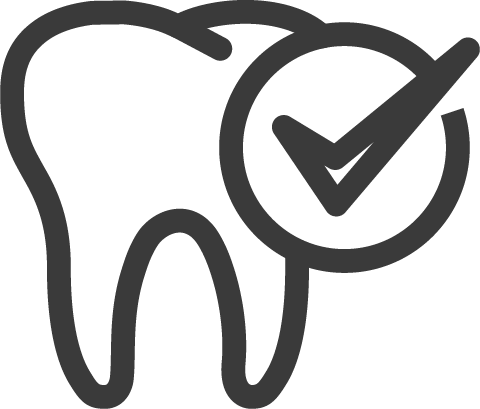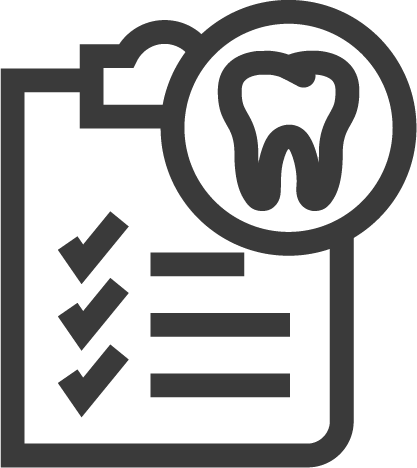
Early intervention is key for biomimetic dentistry. The sooner your dentist notices a problem, the sooner you can get minimally-invasive treatment. That’s why you need to see Dr. Paholiouk every six months for a teeth cleaning and an oral exam in Orange County.

Our goal is to preserve as much of your natural tooth as possible. The more tooth structure we save, the stronger the remaining tooth will be, the less likely the need for intervention of root canal therapy, and the longer a patient can expect to keep a tooth in their mouth. To achieve long term stability of both the restoration & the surrounding tooth, our goal is to mimic the natural tooth in shape, function, flexibility and strength.

Teeth treated with dental crowns often require root canal therapy in the future, since the treatment involves removing a lot of the natural enamel. With biomimetic dentistry, the need for future treatments and your overall risk of complications will be lower.

Using advanced techniques, Dr. Paholiouk preserves more of your tooth structure during your treatment at Monarch Dental Arts. This means your restored tooth will stay healthy and will last longer overall.
We use selective caries removal to gently remove only the decayed part of your tooth, preserving as much healthy structure as possible. Then, we restore it using biomimetic techniques and BPA-free materials for a long-lasting filling that looks, feels, and functions like your natural tooth.
When a tooth is too damaged for a simple filling, traditional dentistry often turns to crowns, which require the unnecessary removal of healthy tooth structure. At our practice, we take a different, biomimetic approach focused on preserving your natural tooth. We begin with selective caries removal, gently cleaning only the decayed area and leaving all healthy structure untouched. Next, we use BPA-free materials and advanced adhesive techniques to seal your tooth. We then take a digital scan of your prepared tooth and send it to the lab, where a custom porcelain inlay, onlay, or overlay is crafted to fit perfectly—like a puzzle piece—into your tooth. Finally, we bond the restoration securely in place, ensuring it looks, feels, and functions just like your real tooth. The result is a strong, long-lasting restoration that preserves more of your natural tooth and supports a healthier smile.
Traditional dental crowns require removing a large amount of healthy tooth structure to fit the crown over the entire tooth. While we do replace existing crowns when necessary, we do not place new crowns because preserving your natural tooth is always our priority. Instead, we offer solutions like inlays, onlays, and overlays, which restore strength and function while keeping more of your original tooth intact. For example, an overlay protects the entire chewing surface of the tooth and rebuilds the damaged area without the extensive reduction needed for a crown—helping you keep more of your natural tooth and creating a stronger, longer-lasting restoration.
In short, biomimetic dentistry focuses on restoring your oral health and preserving as much of your tooth as possible. Traditional dentistry also focuses on restoring your tooth, but is less concerned with preserving your natural tooth structure.
Biomimetic is a term that means “to mimic nature.” And that’s exactly the difference between biomimetic dentistry and traditional dental techniques. Our teeth truly are biomechanical marvels. The enamel that makes up the outer layer of each tooth is stronger than any other part of the body, and is designed to hold up to tremendous wear and tear throughout our lives. As a provider of Biomimetic Dentistry Dr. Anna Paholiouk does all possible to keep as much of your healthy tooth structure as possible by removing only the decayed part of your tooth. So, as a provider of biomimetic dentistry, Dr. Anna Paholiouk does her best to keep as much of your enamel intact as possible during every treatment.
In contrast, traditional dentistry is more “one size fits all.” Some dentists may remove more healthy tooth structure than is necessary simply because it makes the treatment faster or easier. But the more healthy tooth structure you remove, the more problems may occur. The tooth may become weaker, more sensitive, or even more prone to infections in some cases.
With our conservative approach to biomimetic dentistry, we focus on removing only the diseased parts of your tooth. Dr. Anna and our team use advanced materials and treatment methods (to build your tooth up incrementally , lair by lair mimicking the natural tooth structure) to replace the enamel with a strong, durable, and minimally-invasive restoration.
First and foremost, biomimetic dentistry focuses on preserving your natural, healthy tooth structure. This means that it helps keep your tooth strong. For example, if you have a cavity, Dr. Anna will not simply remove all of the tooth structure near the affected area. She will carefully remove only the infected tissue, then rebuild the area layer-by-layer with dental resin. Only diseased, damaged, and compromised tooth material will be removed.
Not only does this simplify your treatment, but it also helps preserve the vitality of your tooth’s pulp. The pulp is what keeps your tooth alive. And as more natural material is removed from your tooth, the risk of pulpitis (pulp inflammation) or a tooth infection may grow, especially as dental restorations like fillings wear down. Eventually, this could result in the need for a root canal. But with biomimetic dentistry, you can keep more of your natural tooth structure healthy. This may help you avoid future root canals and other dental work, and keep your tooth healthy for the years and decades to come.
Our dedication to biomimetic dentistry also extends to aesthetics. No matter the issues facing your smile, Dr. Anna will work with you to develop a treatment plan that keeps your mouth healthy, and restores the natural appearance of your smile. Your teeth will look and feel completely lifelike and natural after your treatment.
Yes, biomimetic dentistry is inherently minimally invasive. This means using the least invasive techniques and procedures necessary to effectively treat the patient—preserving natural tooth structure whenever possible.
For example: using selective caries removal and rebuilding the tooth layer by layer—or by using inlays and onlays instead of traditional crowns—she preserves as much healthy tooth structure as possible.